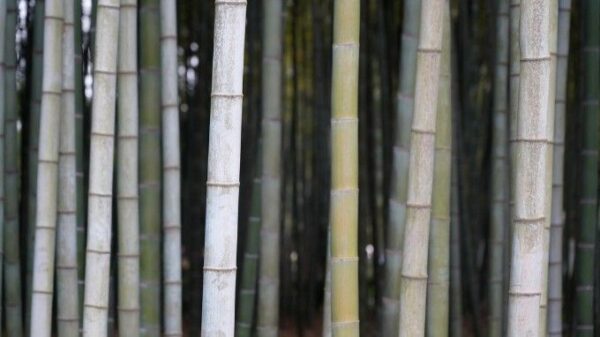Bamboo grows in a huge amount in the state of Assam. Yet, it is of an extreme amount of value. The villages possess endless amounts of bamboo fields and the best thing about this plant is that it is sustainable in nature. Bamboo is also known as ‘Green Gold’ in Assam. When it comes to ‘Bamboo Crafts of Assam: Sustainable Crafts of North East India’ we will explore how something as simple as mere bamboo can be used to create complex baskets with the help of weaving techniques that are passed from generation to generation.
Bamboo Growth

It is also called bhaluka or jati or kaun or jati banh in Assamese dialect. It is heavily used to fulfil the architectural needs of the city, to sustain the local art and most importantly to carry on the household duties. According to various reports, every single family is skilled in making bamboo baskets in Assam and they even use bamboo to create fishing traps. These fishing traps allow them to catch and sell fish which in turn, helps them in earning a livelihood. When it comes to ‘Bamboo Hanidicrafts of Assam: Sustainable Handicrafts of North East India’, for them, is like a requirement which allows the people of the north east states to have a peaceful as well as fruitful life.
Techniques of Craftsmanship

Creating a bamboo basket or a fishing net was done by certain North Eastern tribes like the Mishings Tribe or Tiwas Tribe. They passed these techniques onto the younger generation with the help of oral demonstration and lots of practice. When it comes to ‘Bamboo Crafts of Assam: Sustainable Crafts of North East India’ , the craftsmen simply harvest culms of bamboo onto their fields which are typically of age four years. They prevent it from getting fungal attack by splitting, softening and drying it. Then the artists work on the bamboo with their knives, chisels and cutters. They shape the bamboo as per their need. For example, thick bamboo is required for a basket whereas thin bamboo is needed for a fishing trap. It is a fact of pride that this is one of the crafts that boasts almost zero wastage because most of the bamboo strips are split, polished and joined together with precision.
If you ever wish to purchase a bamboo product, buy one that is authentic. For example, if you find a baskets with metal nails used as a way to join the strips, it was probably not made in an authentic way. Commonly, the bamboo artisans bind their products naturally which makes it look extremely aesthetic and moreover increases biodegradability.
Different Products made of Bamboo
Bamboo is used for all kinds of things in North East India. In rural villages, entire houses are made from bamboo such as walls, the floors and even the roof. The Chang Ghar of Upper Assam is an old stilt house that was built by the Mishing tribe and it was built in such an exceptional way that it was able to withstand floods and earthquakes and even ventilation was present in the house. It was such a great technique that resorts are making their roofs with the same method. It showcases how knowledgeable people of the old generation were.
In conclusion, bamboo is like a tool to promote sustainable development because it can be made with low energy, low emissions and zero waste principles. It does not matter whether you are buying a fishing net or a basket or a hat, at the end of the day, you are supporting good environmental beliefs.
Author
Shreeja Mukherjee


